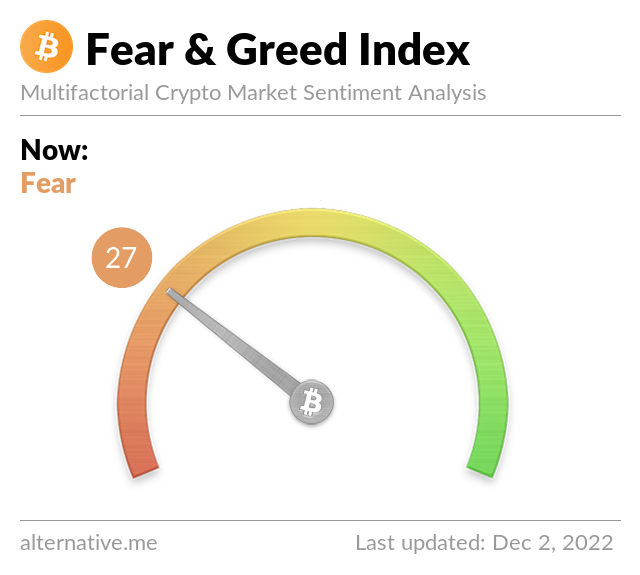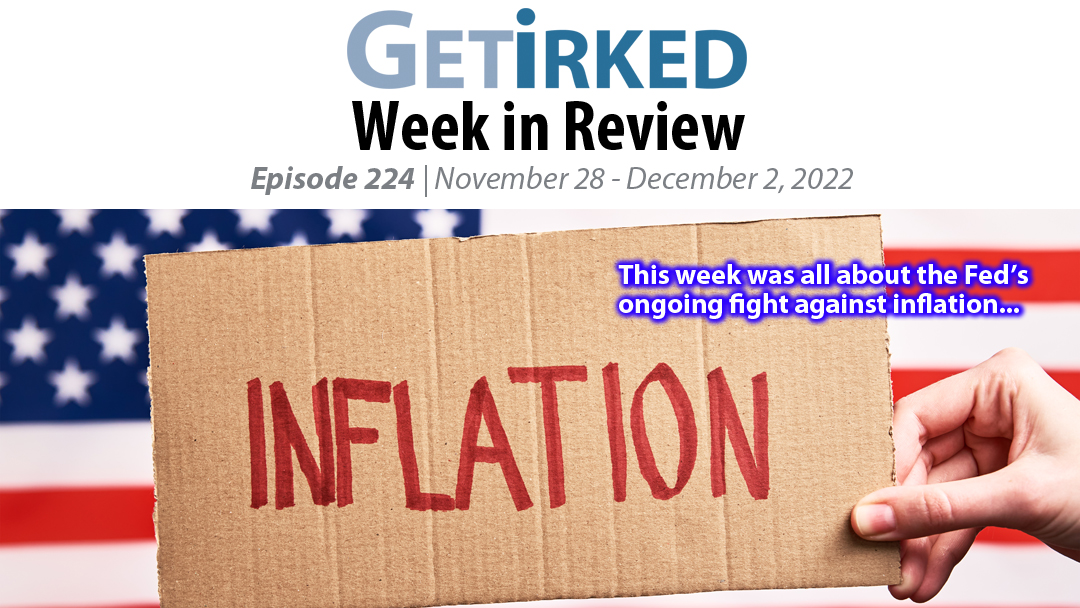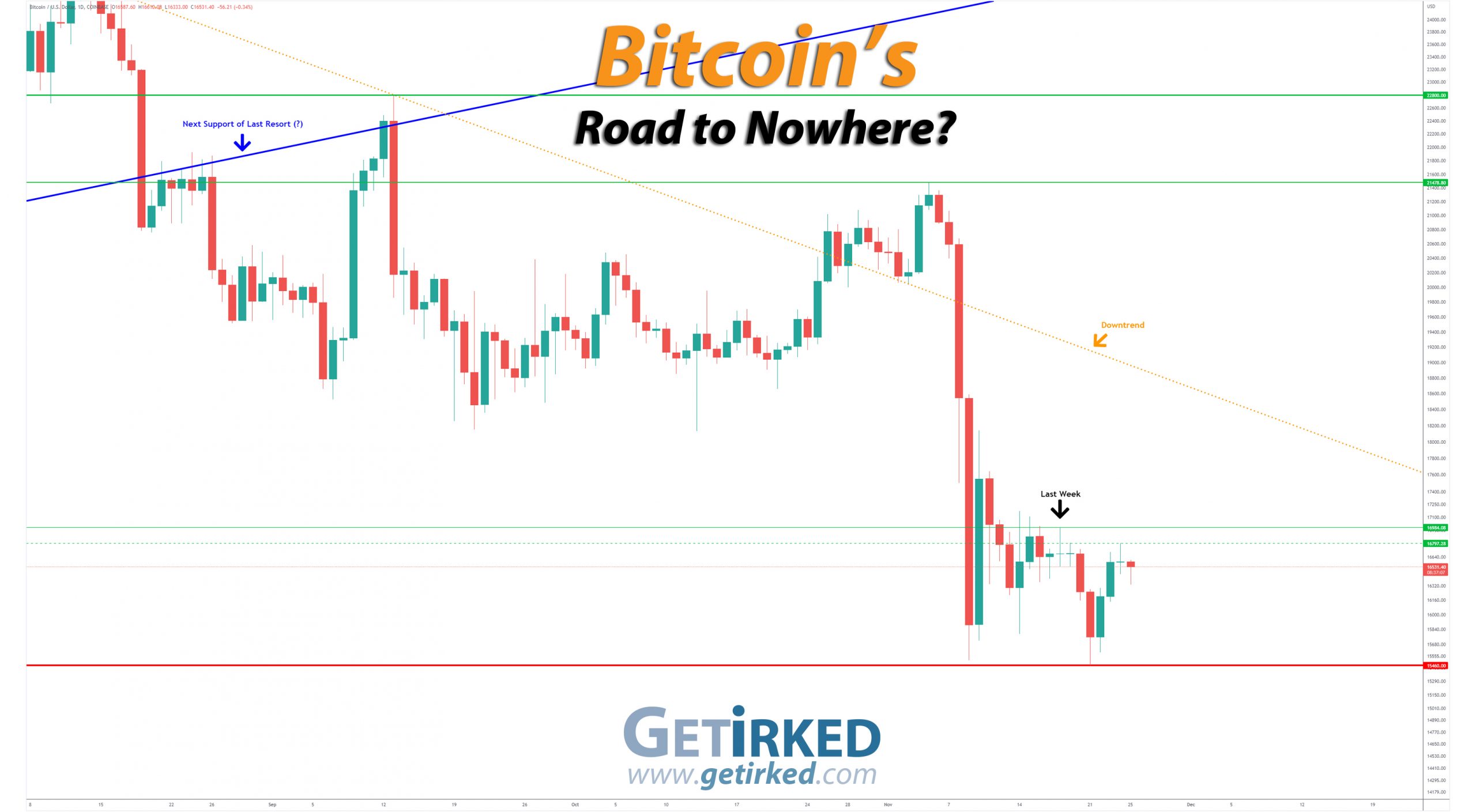Summing Up The Week
The week started off rocky following protests against Covid controls in China and unease about Fed Chair Powell’s upcoming speech on Wednesday.
However, markets exploded to the upside when Powell revealed that the Fed is considering slowing rate hikes as early as the December meeting in a few weeks. Inflation and jobs data came in weak throughout the week, a “bad news is good news” situation.
The markets flipped back over dramatically on Friday when the October nonfarm jobs report showed significant strength in jobs, a good sign for a healthy economy, but a bad sign for the Fed’s fight against inflation.
What a whipsaw week!
Let’s take a look at the news that moved the markets this week…
Market News
Protests against Covid controls erupt across China
Since late 2019, China has enacted strict protocols in its “Zero Covid” policy including mass testing and drawn-out lockdowns of huge regions of the country. Over the weekend, citizen frustration reached a fever pitch as protests broke out across China with people demonstrating their frustration with the obviously-failed policy, reported CNBC on Monday.
While many countries throughout the world may not view group protests as all that rare, the Chinese Communist Party simply does not allow protests, meaning the citizens participating are taking great risk to whatever little freedom they have and even death.
Reporters believe the catalyst for the protests was a building fire which killed ten people in Urumqi, Xinjiang on Friday, a region that had been in lockdown for months. While not fully confirmed, Chinese social media says the Covid protocols prevented rescue workers and even residents from saving lives.
While domestic protests might not sound like something that could affect an international stock market, the opposite is true. Whether in the U.S. or abroad, the market does not manage uncertainty well, and when you’re talking about the second largest economy in the world, uncertainty is bad news.
Private jobs increased 127K in November, well below estimates
Prior to Federal Reserve Chairman Jerome Powell’s speech on Wednesday, the market received some good news… err… bad news? in the form of payroll processor ADP’s report that private hiring slowed sharply in November with only 127,000 new jobs versus the estimate for 190,000 by Dow Jones, reported CNBC.
This is another case of bad news is good news, as a weakening job market was seen as an indication that the Fed’s fight against inflation may be working, and that the Fed may slow the rate of interest rate hikes going forward.
“Turning points can be hard to capture in the labor market, but our data suggest that Federal Reserve tightening is having an impact on job creation and pay gains,” said ADP’s chief economist, Nela Richardson. “In addition, companies are no longer in hyper-replacement mode. Fewer people are quitting and the post-pandemic recovery is stabilizing.”
Powell says smaller rate hikes may start in December
In a speech to the Brookings Institute on Wednesday, Federal Reserve Chairman Jerome Powell confirmed that smaller rate hikes (than 0.75%) may start as early as December, reported CNBC. Naturally, smaller rate hikes were what the market was hoping for, so stocks rallied following Powell’s speech.
“Despite some promising developments, we have a long way to go in restoring price stability,” Powell said in his speech. “Thus, it makes sense to moderate the pace of our rate increases as we approach the level of restraint that will be sufficient to bring inflation down; the time for moderating the pace of rate increases may come as soon as the December meeting.”
While the market took his speech positively, it’s worth noting that the Fed has repeatedly said the benchmark interest rate will have to remain high for some time, a fact that many analysts believe has not been priced into the markets. In fact, while many are predicting stocks will rally into year-end, noted professionals like Mike Wilson, a chief analyst from Morgan Stanley, believe the market has not bottomed, yet, and the 2022 lows will break in the next year.
Key inflation measure rose 0.2% in October, less than expected
On Thursday, the Commerce Department released the personal consumption expenditures price index (PCE), a measure favored by the Fed, which rose 0.2% in October versus 5% from a year ago, and 0.1% lower than Dow Jones estimates for a rise of 0.3%, reported CNBC.
While a slowing inflation rate is a good sign that the Fed’s efforts may be working, it’s important to remember that any positive number means that inflation is increasing, not decreasing. There’s still a lot of work to go before we see any form of retreat in these numbers.
“This morning’s data was a goldilocks report as it showed core inflation continuing to drop,” said Chief Investment Officer Chris Zaccarelli for Independent Advisor Alliance. “If inflation keeps coming down, then markets will keep running higher, as investors will conclude that the Fed won’t need to raise rates as high, or keep them high for as long, as previously expected.”
Payrolls increase 263K in November vs 200K estimate
On Friday, the Labor Department’s nonfarm payroll numbers for Novermber came in hot at 263,000 new jobs and an unemployment rate of 3.7% versus estimates for 200K and 3.7%, respectively, reported CNBC. Despite ADP’s private number showing weakness earlier in the week, the two reports diverged once more as they have been privvy to do over the past few years.
“To have 263,000 jobs added even after policy rates have been raised by some [375] basis points is no joke,” said Seema Shah, chief global strategist at Principal Asset Management. “The labor market is hot, hot, hot, heaping pressure on the Fed to continue raising policy rates.”
The market clawed back some more of the gains it brought in from Wednesday’s rally as investors became less confident that the Fed will decrease the size of the next rate hike. Whereas Powell’s comments indicated they might drop December’s rate hike to 0.5%, it’s possible Friday’s report will cause the Fed to take another 0.75% whack at rates.
Next Week’s Gameplan
This week’s rally was unnerving to me, to say the least. While slowing inflation data is certainly good news for the Fed, we’re still seeing inflation and the measures the Fed will need to keep in place for months, if not longer, are going to be rough for markets.
I’m starting to get bullish on the Fed – that they might be able to engineer a “soft landing” for the economy where fewer people lose their jobs and we avoid a recession – however, a soft landing for the economy does not equate to a soft landing for stocks, necessarily.
Accordingly, I’ve been taking profits as the rally continues and I will become even more aggressive throughout December. Regardless of how the market recovers going into the end of the year, I feel we’re playing out the 2008-09 period of the Great Recession where markets rallied into the end of 2008 only to make new lower, lows in the first quarter of 2009; in other words, the first half of 2023 could be rough.
I’ll see you all here next week!
This Week in Play
Stay tuned for this week’s episodes of my two portfolios Investments in Play and Speculation in Play coming online later this weekend!
Crytpo Corner
Important Disclaimer
Get Irked contributors are not professional advisers. Discussions of positions should not be taken as recommendations to buy or sell. All investments carry risk and all readers must accept their own risks. Get Irked recommends anyone interested in investing or trading any asset class consult with a professional investment adviser to determine if an investment idea is suitable to them and their investment goals.
Bitcoin Price (in USD)
%
Weekly Change
Bitcoin Price Action
Wait. Wasn’t BlockFi already bankrupt??
While it should come as a surprise to no one (hell, I made a video warning that this would happen back in August), crypto exchange BlockFi declared bankruptcy on Monday, reported CNBC. BlockFi initially fell under extreme economic pressure when Bitcoin crashed in June, however now-defunct brokerage FTX pledged to support BlockFi financially. Naturally, now that FTX is bankrupt (with apparently zero funds in reserve), BlockFi could not find an alternate source of support and declared bankruptcy.
On Wednesday, Bitcoin rallied in direct correlation with all other risk assets following Fed Chair Powell’s comments on easing rate hikes. The crypto broke through the weekly high at $16,797.28 and the monthly high at $16,984.08 before finding new resistance at $17,317.80 on Thursday and pulling back.
On Friday, Bitcoin pulled back with the rest of the market following the stronger-than-expected jobs report. As I mentioned above, there’s nothing about the crypto’s price action than indicates anything other than a direct correlation to all other risk assets.
From here, Bitcoin’s next big move will either break through that resistance where it’s next point of significant resistance is $18,140.62, or it will pull back where its weekly low was set earlier this week at $15,992.64 followed by $15,790.25 and then the 2022 low down at $15,460.00. If the yearly low breaks, the downside could be rough as there’s no significant support until $12K if not even $10K.
The Bullish Case
Bulls point to Wednesday’s rally as the end of the Crypto Winter, with many analysts exclaiming “this is your last opportunity to buy Bitcoin under $20K!” While the oversold rally was a substantial 8%+ pop off its weekly low, that doesn’t necessarily indicate anything beyond a face-ripping bear market rally.
The Bearish Case
Bears continue to maintain the upper-hand. With no positive catalysts in the space and past Crypto Winters lasting 140 days or longer from the last significant drop, Bears don’t believe Bitcoin will recover until March or April of 2023.
Additionally, with the amount of firms continuing to go bankrupt and liquidate, there’s no reason to expect that Bitcoin has bottomed, either. Bitcoin could have a lot further to go, and history is on the Bears’ side on this point.
Bitcoin Trade Update
Current Allocation: 18.462% (Unchanged since last update)
Current Per-Coin Price: $22,606.17 (Unchanged since last update)
Current Profit/Loss Status: -25.176% (+1.696% since last update)
Despite making a slightly higher weekly high, Bitcoin continues to remain rangebound. I have raised my next buy above the weekly low to add another tiny quantity to my position if the crypto holds that support.
However, I remain bearish on the space. Crypto Winters aren’t ended by a Fed slowing rate hikes, the entire sector may need the Fed to fully pivot and cut rates before it recovers, and that pivot’s potentially years away.
Bitcoin Buying Targets
Using Moving Averages and supporting trend-lines as guides, here is my plan for my next ten (10) buying quantities and prices:
0.139% @ $16,118
0.139% @ $15,691
0.139% @ $14.987
0.139% @ $14,207
0.139% @ $13,559
0.139% @ $12,972
0.139% @ $12,475
0.139% @ $12,054
0.277% @ $11,765
0.277% @ $11,323
Not Your Keys, Not Your Crypto…
In light of everything happening with brokerages, I no longer keep any of my crypto on an exchange and I only keep enough USD on the exchange to execute my next few buys. I use multiple cold wallets from the brands Ledger and Trezor to hold my crypto (click the links to access the direct sites, and I receive no affiliate benefits from these links).
Additionally, I have now divided my allocated USD between two different exchanges – Gemini and Coinbase – in case one (or both) becomes insolvent. Disclaimer: We both receive a bonus if you use either my Gemini or Coinbase referral links to open accounts.
Given everything that happened with FTX and Sam Bankman-Fried claiming customer funds were safe only to have it go completely bankrupt, I do not trust anyone in the space, even with Coinbase being publicly traded (and one of my own positions).
No price target is unrealistic in the cryptocurrency space – Bullish or Bearish.
While traditional stock market investors and traders may think the price targets in the cryptocurrency space are outlandish due to the incredible spread (possible moves include drops of -90% or more and gains of +1000% or more), Bitcoin has demonstrated that, more than any speculative asset, its price is capable of doing anything.
Here are some of Bitcoin’s price movements over the past couple of years:
- In 2017, Bitcoin rose +2,707% from its January low of $734.64 to make an all-time high of $19,891.99 in December.
- Then, Bitcoin crashed nearly -85% from its high to a December 2018 low of $3128.89.
- In the first half of 2019, Bitcoin rallied +343% to $13,868.44.
- In December 2019, Bitcoin crashed -54% to a low of $6430.00 in December 2019.
- In February 2020, Bitcoin rallied +64% to $10,522.51.
- In March 2020, Bitcoin crashed nearly -63% to a low of $3858.00, mostly in 24 hours.
- Then, Bitcoin rallied +988% to a new all-time high of $41,986.37 in January 2021.
- Later in January, Bitcoin dropped -32% to a low of $28,732.00.
- In February 2021, Bitcoin rallied +103% to a new all-time high of $58,367.00.
- Later in February, Bitcoin dropped -26% to a low of $43,016.00.
- In April 2021, Bitcoin rallied +51% to a new all-time high of $64,896.75.
- In June 2021, Bitcoin crashed -56% to a low of $28,800.00.
- In November 2021, Bitcoin rallied +140% to a new all-time high of $69,000.00.
- In November 2022, Bitcoin crashed -78% to a low of $15,460.00.
Where will Bitcoin go from here? Truly, anything is possible…
What if Bitcoin’s headed to zero?
The only reason I speculate in the cryptocurrency space is I truly believe Bitcoin isn’t headed to zero. I am prepared for that possibility, however, by knowing I could potentially lose all of the capital I’ve allocated to this speculative investment. Professional advisers recommend speculating with no more than 5% of an investor’s overall assets. Personally, I’ve allocated less than that to speculating in crypto. I feel that anyone who doesn’t fully believe in the long-term viability of cryptocurrency would be better served not speculating in the space. On a good day, this asset class isn’t suitable for those with weak stomachs. On volatile days, the sector can induce nausea in the most iron-willed speculator. If a speculator isn’t confident in the space, the moves will cause mistakes to be made.DISCLAIMER: Anyone considering speculating in the crypto sector should only do so with funds they are prepared to lose completely. All interested individuals should consult a professional financial adviser to see if speculation is right for them. No Get Irked contributor is a financial professional of any kind.


